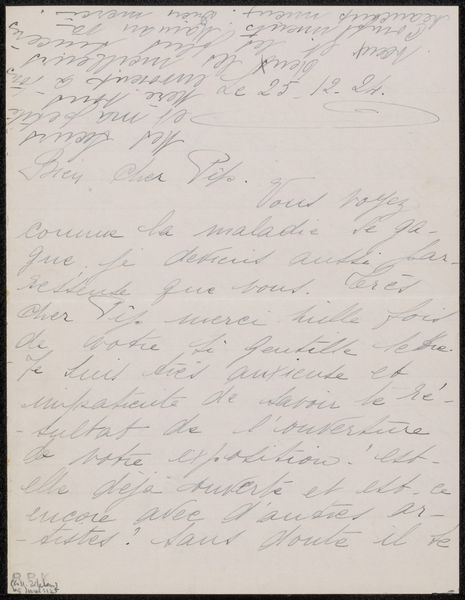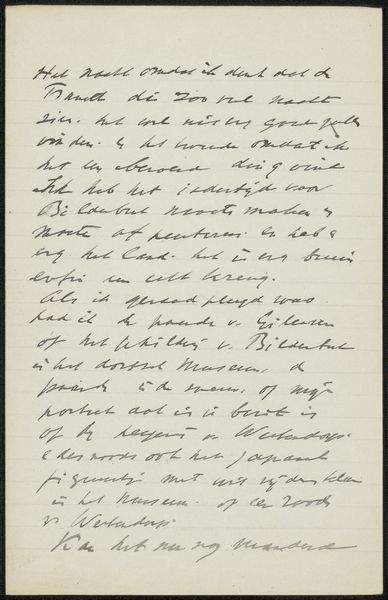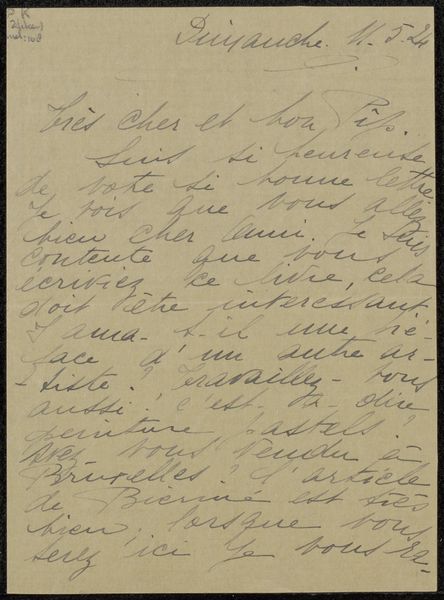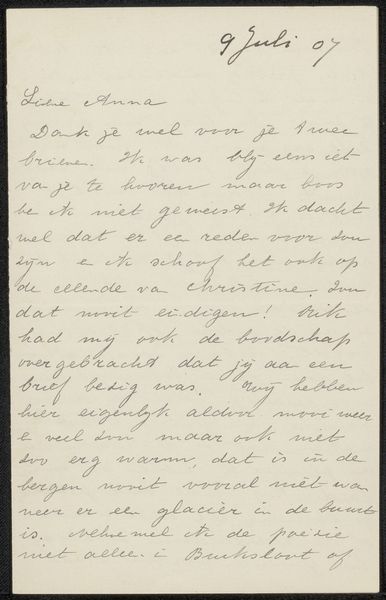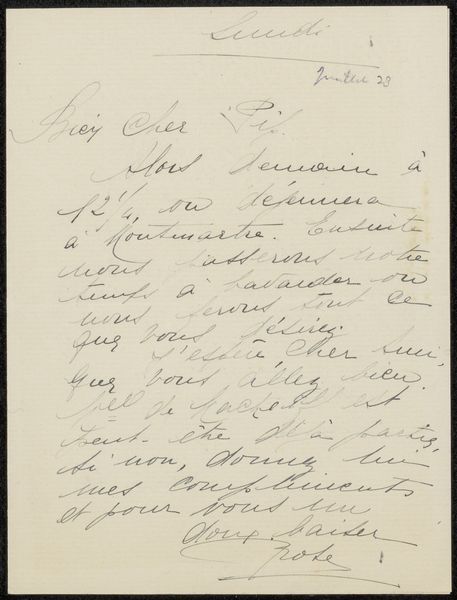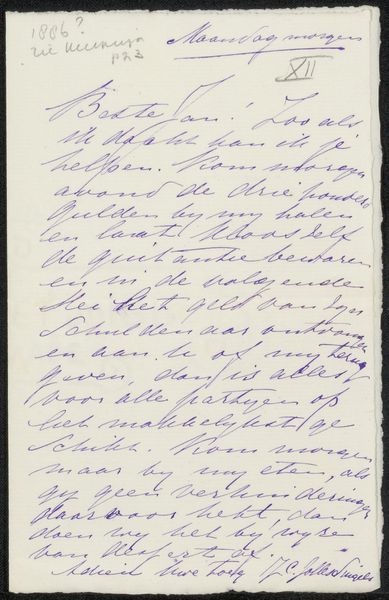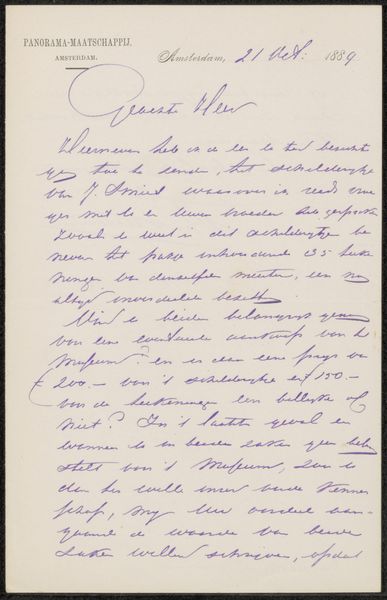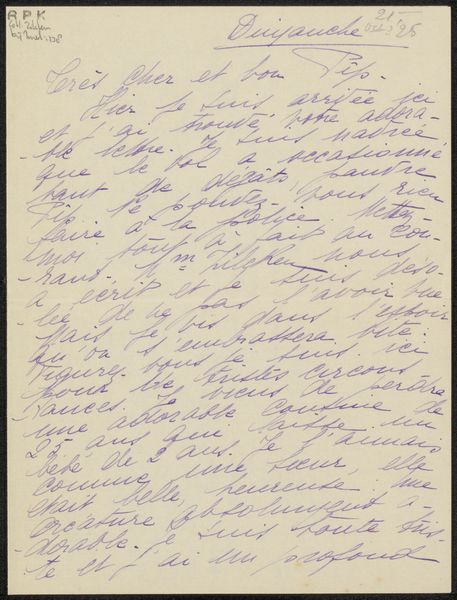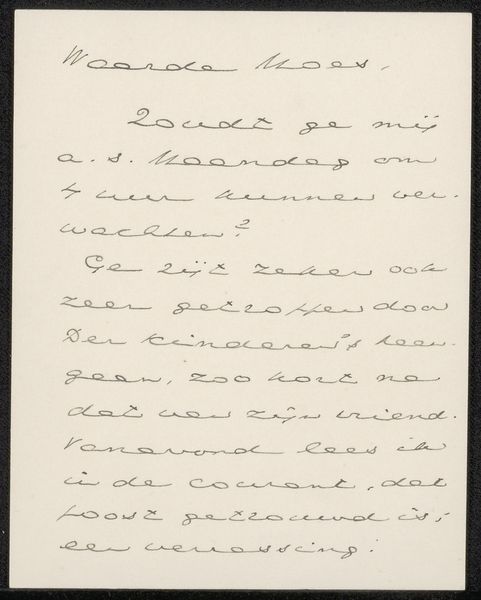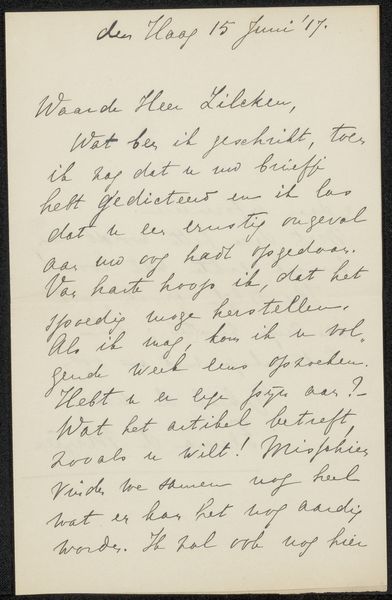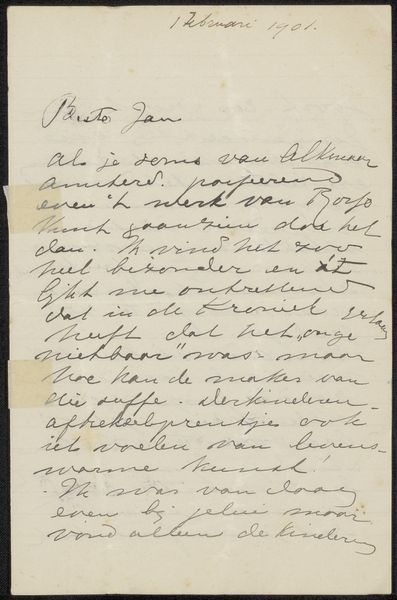
paper, ink
#
paper
#
ink
Copyright: Rijks Museum: Open Domain
Curator: This is a letter, titled "Brief aan Philip Zilcken," crafted sometime between 1911 and 1930. The author utilized ink on paper to pen this correspondence. Editor: There’s a fragility to it, even from just seeing the digital reproduction. The handwriting, the way the ink fades in places… it speaks to the ephemerality of communication. What was urgent then, now is history. Curator: Indeed. Letters possess such unique textures; they embody an intimacy easily lost in our digital age. You see the handwriting; perhaps there is even a slight discoloration to the paper itself from being preserved through the ages. Editor: Absolutely. And it poses questions, too. The fact that it's addressed to someone specific, Zilcken, positions it within a particular network. How might his identity—as a notable figure, presumably—affect the letter’s significance or interpretability? Curator: Well, knowing Zilcken as an artist does suggest some kinship or artistic camaraderie that goes beyond simply the writing itself. A hidden layer of possible intentions or messages, coded in plain sight. Editor: It makes you consider the unspoken context, what was understood between the writer and recipient. Reading between the lines feels particularly charged here. What societal norms governed how certain things could, or couldn’t, be articulated directly? Curator: Such a tangible artifact creates an echo effect in my imagination, resonating in terms of psychology. One senses the weight of what is shared, and what remains unspoken. There’s something innately compelling about its form and context. Editor: I agree; something in seeing the materiality, like the very ink of the message, ties us more forcefully to this little slice of time and subjectivity from the past. The political potential is subtler here, less overt but just as relevant when you contextualize the writer's milieu. Curator: It truly bridges historical and present thought, in this very special, material fashion. Editor: Indeed. The whispers of history resonate—prompting deeper reflection and inquiry from our side.
Comments
No comments
Be the first to comment and join the conversation on the ultimate creative platform.

